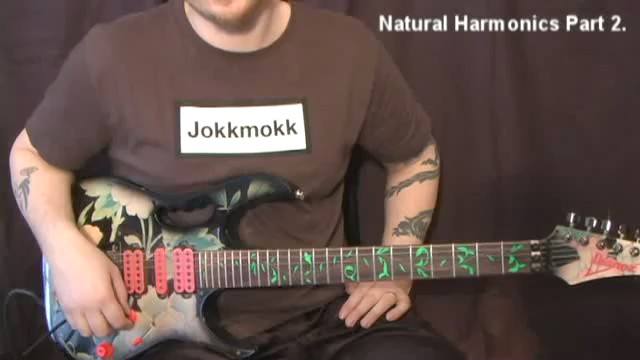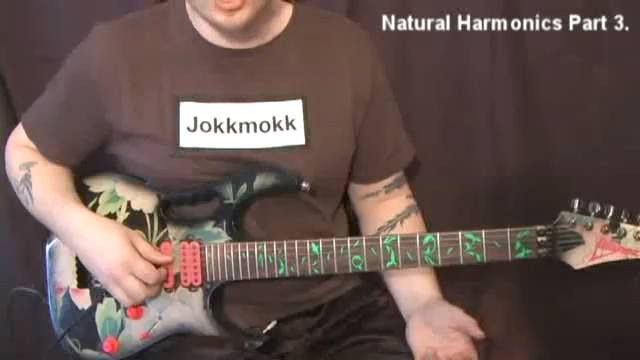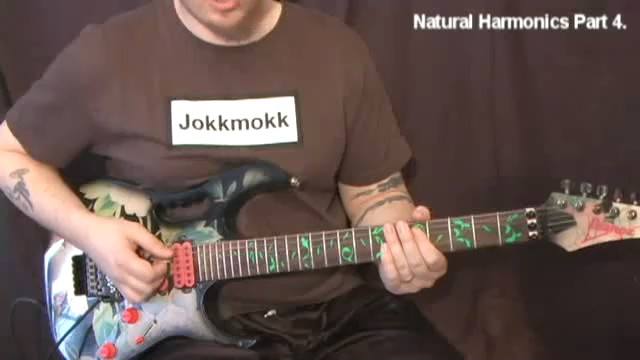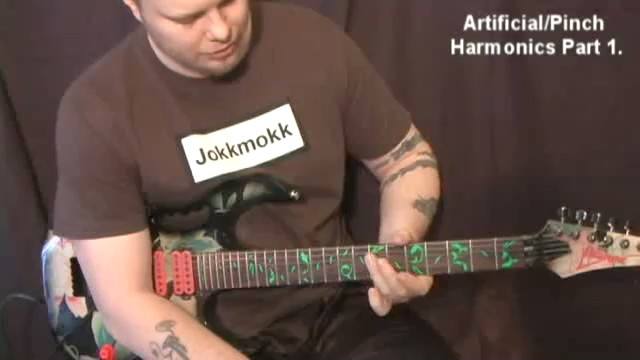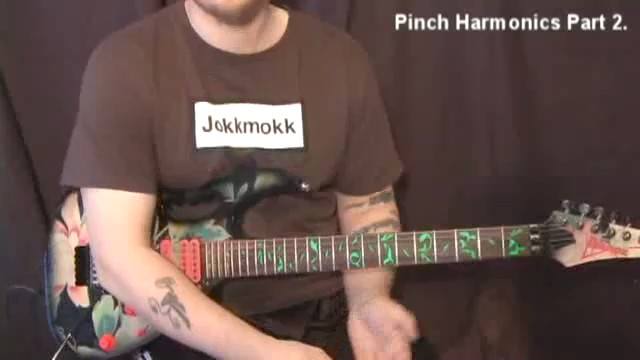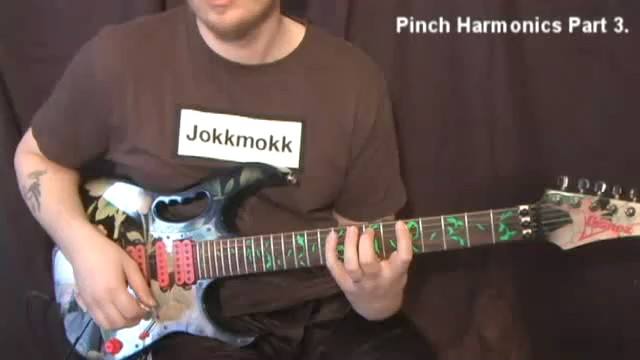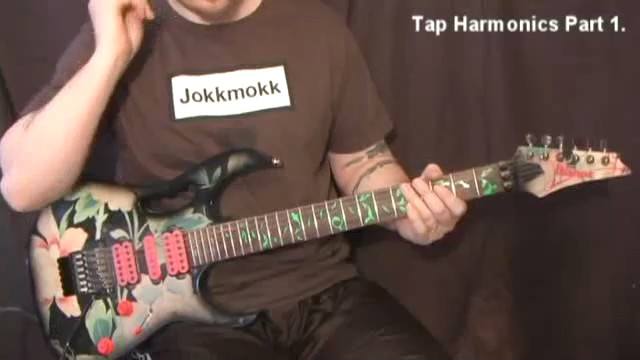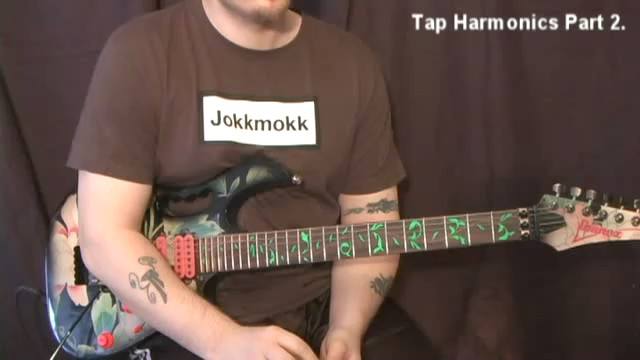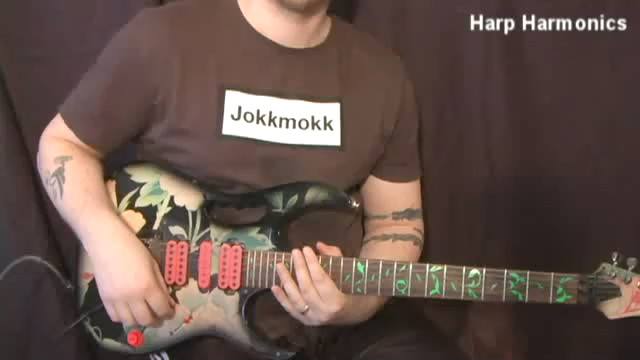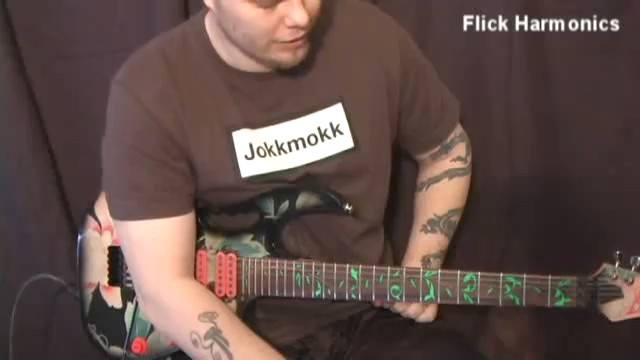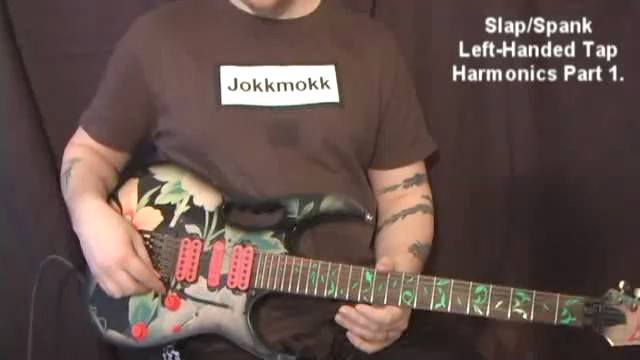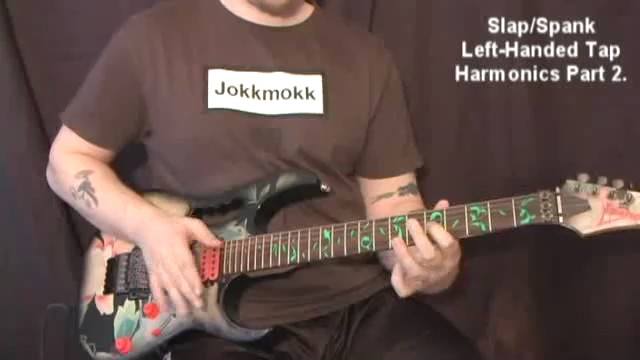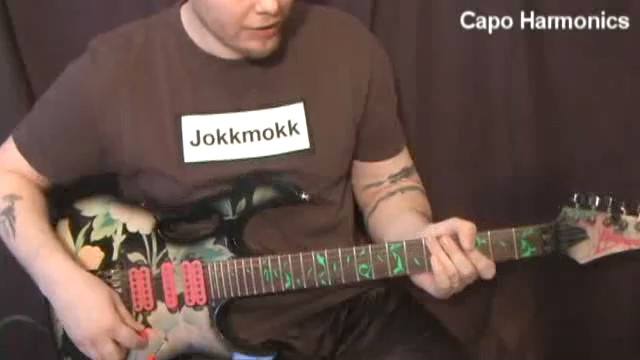Guitar Tutorial
All About Harmonics
Begin Tutorial-
SaveCompleteInfo1
-
SaveCompleteInfo2
-
SaveCompleteInfo3
-
SaveCompleteInfo4
-
SaveCompleteInfo5
-
SaveCompleteInfo6
-
SaveCompleteInfo7
-
SaveCompleteInfo8
-
SaveCompleteInfo9
-
SaveCompleteInfo10
-
SaveCompleteInfo11
-
SaveCompleteInfo12
-
SaveCompleteInfo13
-
SaveCompleteInfo14
-
SaveCompleteInfo15
Instructor: Richard Lundmark Level: Intermediate Topic: Theory Style: Any Style
Excerpt: Greetings Guitar Slingers! Welcome to yet another (long) tutorial from yours truly. This time we will dive deep into the wonderful world of Harmonics! The theory, concepts and practice of harmonics in all its various incarnations are more often than not VERY misunderstood, and can be a source of great confusion. I will do my best to help you make heads and ...
Media Length: 5:15
Instructor: Richard Lundmark Level: Intermediate Topic: Theory Style: Any Style
Excerpt: Welcome to part 1 of the theoretical part of natural harmonics. The first thing we need to cover and understand is the physics of the string – String Theory. The first thing we need to acknowledge is that when you play a note (be it an open string of a fretted note), you are not only playing that chosen note, but a whole series of notes simultaneously,...
Media Length: 2:52
Instructor: Richard Lundmark Level: Intermediate Topic: Theory Style: Any Style
Excerpt: In this part you will have to keep a close eye on the Table of Harmonics as well. As you can see, the 1/3 division is always the perfect 5th up from the ½ (or the perfect 4th down from the ¼ division). That is, a harmonic on the 7th fret (1/3) of the D-string will be an A. The very same A as the 5th fret (1/4) of the A-string. This is what enab...
Media Length: 6:10
Instructor: Richard Lundmark Level: Intermediate Topic: Theory Style: Any Style
Excerpt: Before going into this part, it would be wise to re-visit (or visit) my set-up tutorial where I discuss Intonation, and the equal temperament system of the guitar, as opposed to true temperament. You can find that part of the tutorial HERE. Then, you will also note in the video how I compare the 1/5 division of the D-string producing the harmonic major thir...
Media Length: 4:43
Instructor: Richard Lundmark Level: Intermediate Topic: Theory Style: Any Style
Excerpt: In this part, I just reinforce the fact that the string's length is not relevant, only its pitch. Regardless if the string is divided by fretting a note, or elongated say on a bass, the positions of the harmonics will ALWAYS stay the same, that is ¼ of the string length and so on. Shortening the string will of course throw off some of the harmonics in...
Media Length: 6:50
Instructor: Richard Lundmark Level: Intermediate Topic: Technique Style: Any Style
Excerpt: First off, we need to discuss the terms artificial and pinch harmonics. These are most often labeled as two different names for the same thing, that is, the harmonics produced using the thumb and pick in unison. In reality, Artificial Harmonics is an umbrella term for ALL non-natural open-string harmonics. HOWEVER, you should be aware of the fact that certa...
Media Length: 7:41
Instructor: Richard Lundmark Level: Intermediate Topic: Technique Style: Any Style
Excerpt: As I mentioned in the end of the last part, you can only produce the harmonics given to you by the divisions and nodes of the natural harmonics. You cannot produce something that is not there! I’ve seen instructional videos of guys playing an Amin Pentatonic scale, and stating that he will first play the A and then “notes from the scale, such as ...
Media Length: 6:41
Instructor: Richard Lundmark Level: Intermediate Topic: Technique Style: Any Style
Excerpt: This part re-emphasizes the difference between the natural over-tone series (with the harmonics) and the equal temperament (compromised) division of the fret board. For instance, you cannot produce a perfect major third interval, unless you use the 4/5 division where you can obtain the perfect major third. So, always keep this in mind when using overtones. I...
Media Length: 4:50
Instructor: Richard Lundmark Level: Intermediate Topic: Technique Style: Any Style
Excerpt: As explained in the video, Tap Harmonics is just another variation on the same theme. Let's say you fret a D on the 5th fret of the A-string. The ½ division of this new string length would then be situated at the 17th fret (this is also pretty much Tap Harm 101). You tap the harmonic node rapidly, with some force and “snap”. Do NOT perform...
Media Length: 5:41
Instructor: Richard Lundmark Level: Intermediate Topic: Technique Style: Any Style
Excerpt: Finally! Time for some actual examples huh?! Now, even though notating tap harmonics isn't as bad as trying to notate correct pinch harmonics, there is still no software that does it well I’m afraid. I can notate the octave taps, but as for notating other harmonic nodal points, no can do. You’ll just have to experiment with the examples yourself...
Media Length: 4:52
Instructor: Richard Lundmark Level: Intermediate Topic: Technique Style: Any Style
Excerpt: Harp Harmonics is a technique mostly used by classical guitarists, and is also often used with a clean tone, not a distorted one. What you do here is let the tip of your index finger touch the harmonic node while your right thumb strikes the string behind, setting the string in motion. It is called Harp Harmonics simply because when using a clean sound, you...
Media Length: 5:40
Instructor: Richard Lundmark Level: Advanced Topic: Technique Style: Any Style
Excerpt: Okay then! Time for the cutting edge stuff! Before we go into this part, I must direct your attention to ALL the transcribed tabs for both the Flick and the Slap harmonic parts. As I have mentioned time and time again, there is currently no way in guitar notation software to notate natural (or other) harmonics correctly. I have used "A.H." markings here ju...
Media Length: 4:00
Instructor: Richard Lundmark Level: Advanced Topic: Technique Style: Any Style
Excerpt: On to the Slap/Spank/Left Hand Tap Harmonics! Same as with previous examples, the notated harmonics do not exactly match what is played. This is another technique to produce a similar result, and is my preferred weapon of choice for harmonics. This technique is nothing new, but has been quite underground until players like Ron Thal and Mathias IA Eklundh m...
Media Length: 3:47
Instructor: Richard Lundmark Level: Advanced Topic: Technique Style: Any Style
Excerpt: Okay, the next step is to add other whammy bar effects to the stew. First up is the regular “hitting the ol’ wang-bar”. As you release the whammy bar, you just hit it again, slightly depressing it in a rhythmical fashion. What note value you choose is up to you. Just take my examples for what they are, examples. This is the reason you need ...
Media Length: 4:40
Instructor: Richard Lundmark Level: Advanced Topic: Technique Style: Any Style
Excerpt: "Capo Harmonics" is maybe not the most imaginative name, but it was the best I could come up with. I have no idea if this particular technique has a specific name. To start out with, you’ve all tried and heard the Vai/Satriani licks, where you just make a drill on the neck and run your right hand finger lightly back and forth along the string to trigge...
Media Length: 7:45



